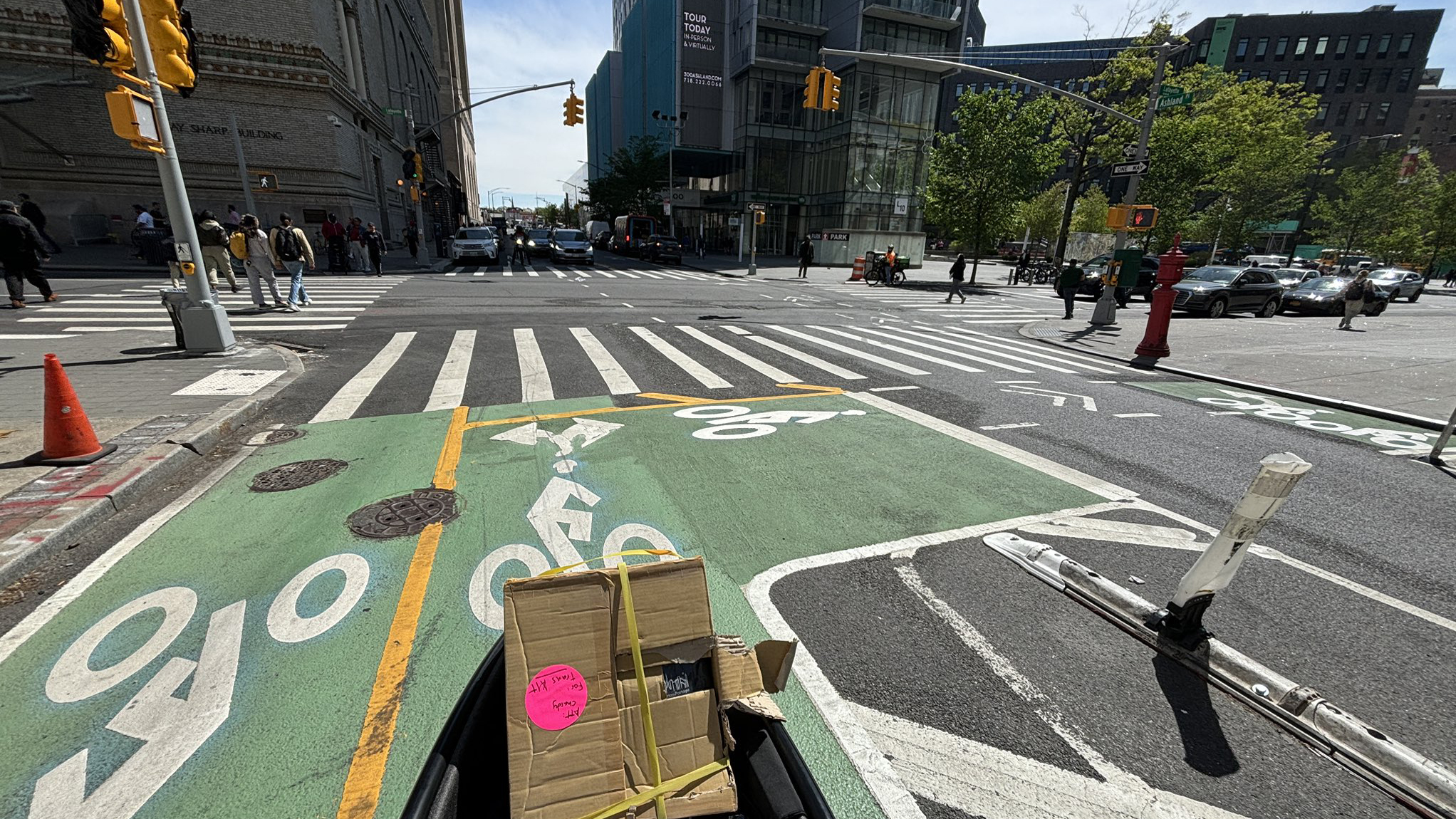Yesterday, Streetsblog looked at Flushing Commons, a mixed-use development in the heart of transit-rich downtown Flushing, where the New York City Economic Development Corporation has mandated suburban levels of parking. We asked the EDC why they required nearly 1,600 spaces in the development, and now we have an answer. It's a revealing look at how the city has relinquished its responsibility to set a coordinated parking policy, much less one in line with the goals of PlaNYC 2030.
EDC's 1,600-space requirement comes from just three numbers, according to an agency spokesperson:
- Flushing Commons will be built on the site of a municipal surface parking lot with 1,101 spaces.
- The minimum parking required by the Department of City Planning, based on the Flushing Commons development plan, is around 700 spaces.
- The city is adding an additional 200 parking spaces to a nearby municipal lot.
EDC reasoned that Flushing Commons shouldn't eliminate any of the parking that already existed and that the planning department's parking minimums were a good guideline for the new development, so they added 1,100 and 700. Then they subtracted the 200 new off-site spaces, and voila, they decided that the project required 1,600 spaces.
That kind of thinking leads straight to car-dependency. "EDC's approach to this reflects an implicit policy that New York City should become more auto-oriented," said UPenn professor and parking policy expert Rachel Weinberger. "By preserving existing spaces while adding additional spaces they are ensuring that more trips will be made by car."
What's particularly striking about EDC's math is that it's completely isolated from all other considerations. The strain on Flushing's streets, which are already clogged with congestion, wasn't a factor. The PlaNYC goal of reducing transportation emissions by 44 percent by 2030 wasn't a factor. Officials apparently never stopped to think about the potential housing, retail or community uses that could have been built instead of some of the 500,000 square feet given to vehicle storage. Even the project's financial feasibility, which we noted yesterday was threatened by such a large parking mandate, wasn't a factor.
In other words, EDC calculated its parking requirement in a vacuum, without considering the true costs. Performing some first-grade math with three numbers does not constitute a real parking policy.
The economic development specialists at EDC may not think it's their job to consider transportation, or land use,
or sustainability, but the agency is already setting the city's parking
policy through its RFPs, which bind many of the largest developments in
the city. It must start making those parking policy decisions within a broader context.
In fact, that's what PlaNYC was supposed to require. In his 2007 speech announcing PlaNYC, Mayor Bloomberg said that his staff "realized that you can’t formulate a land use plan without thinking about transportation." All the relevant agencies were expected to collaborate with the shared goal of building a sustainable city.
That includes EDC, which the original PlaNYC report gave direct authority over a dozen initiatives, from expanding ferry service to improving the electric grid. Unfortunately, at Flushing Commons, like so many other EDC projects, PlaNYC goals don't seem to have even entered the equation.





